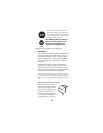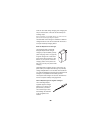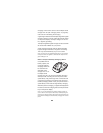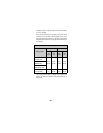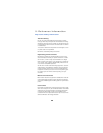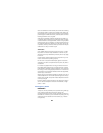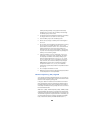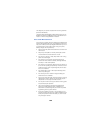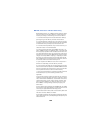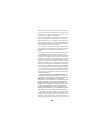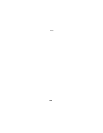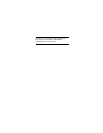99
battery discharge facility of any approved accessory
available for your phone). Do not attempt to discharge
the battery by any other means.
Temperature extremes will affect the ability of your battery
to charge: allow it to cool down or warm up first.
Use the battery only for its intended purpose.
Never use any charger or battery which is damaged or
worn out.
Do not short circuit the battery. Accidental short circuiting
can occur when a metallic object (coin, clip, or pen)
causes direct connection of the + and - terminals of the
battery (metal strips on the back of the battery), for
example when you carry a spare battery in your pocket
or purse. Short circuiting the terminals may damage the
battery or the connecting object.
Leaving the battery in hot or cold places, such as in a
closed car in summer or winter conditions, will reduce
the capacity and lifetime of the battery. Always try to
keep the battery between 59° F and 77° F (15° C and
25° C). A phone with a hot or cold battery may tempo-
rarily not work, even when the battery is fully charged.
NiMH batteries performance is particularly limited in
temperatures below 14° F (-10° C). Li-ion batteries
performance is particularly limited in temperatures below
32° F (0° C).
Do not dispose of batteries in a fire!
Batteries must be recycled or disposed of properly. Must
not be disposed of in municipal waste.
Radio Frequency (RF) Signals
Your wireless handheld portable telephone is a low power ra-
dio transmitter and receiver. When it is ON, it receives and also
sends out radio frequency (RF) signals.
In August, 1996, the Federal Communications Commission
(FCC) adopted RF exposure guidelines with safety levels for
handheld wireless phones. Those guidelines are consistent
with safety standards previously set by both U.S. and interna-
tional standards bodies:
ANSI C95.1 (1992)*, NCRP Report 86 (1986)*, ICNIRP (1996)*.
Those standards were based on comprehensive and periodic
evaluations of the relevant scientific literature. For example, over
120 scientists, engineers, and physicians from universities, gov-
ernment health agencies and industry reviewed the available
body of research to develop the ANSI Standard (C95.1).



